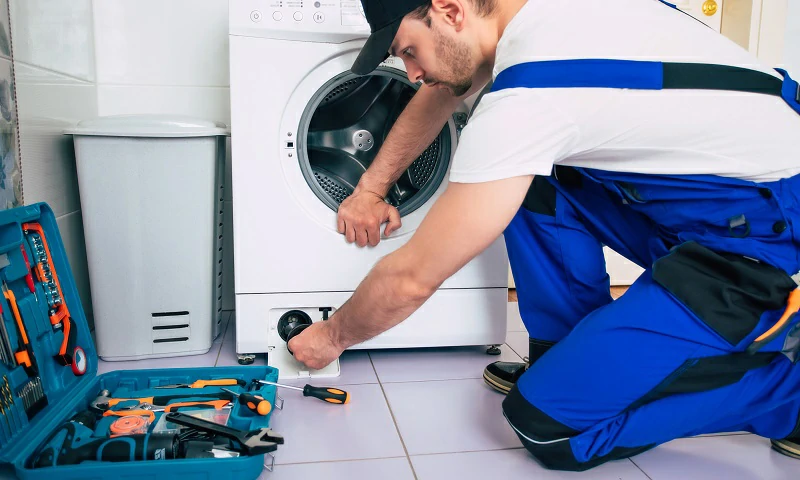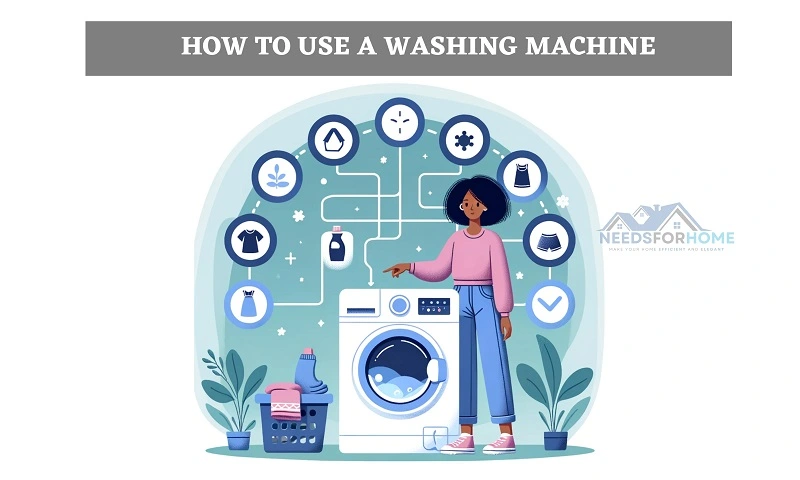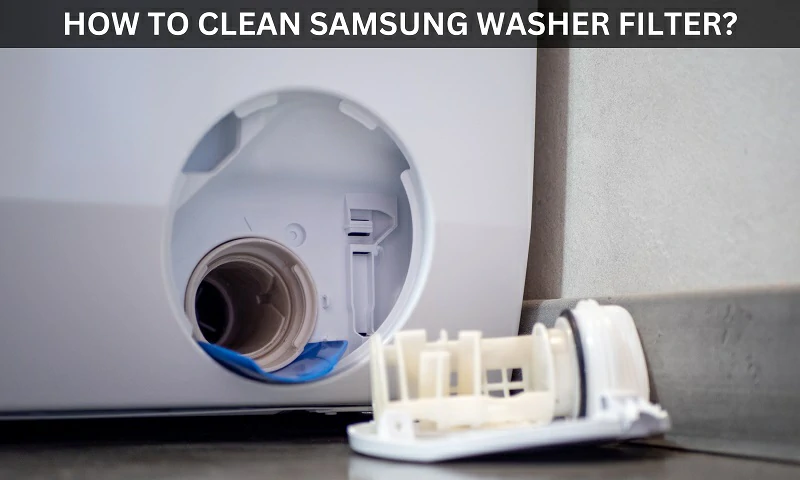Washers drain the wastewater obtained after every wash cycle and spin cycle with the help of a drain pump. The drain pump is connected to a filter and a drain hose transfers the wastewater to the drain line in your house.
But sometimes, the washing machine may not be draining the water properly for several reasons. In this article, we will discuss why your GE washer doesn’t drain water properly.

Why is My GE Washer Not Draining?
Your GE top load or front load washer may not be draining water due to a clogged drain filter, blocked drain hose or drain pipe, fault in the drain pump, excessive suds, and poor installation of drain hose to the standpipe.
Let us now understand each of the reasons for the washer not draining properly and find out how to fix a washer that is not draining.
Reasons and Fixes for a GE Washer That is Not Draining
Reason 1 – Clogged Drain Pump Filter
The drain pump filter of the GE front load or top load washer might be clogged with lint and debris. This may restrict the water flow into the standpipe and cause the draining issue.
Routine maintenance of the washer filter is important to prevent clogs from debris and lint fibers. The debris and lint might obstruct the fine filter of the drain pump. Cleaning the washer filter will easily fix the draining issue in your washer.
Fix
- Locate the drain pump filter in your washer
- Remove the filter and clean it thoroughly using running water
- Now replace the filter in the washer and check whether the washing machine drains
In top-load machines, you will have to clean the debris filter inside the tub to ensure proper drainage.
Reason 2 – Blocked Drain Hose or StandPipe
The washer comes with a drain hose to expel the wastewater from the drum. If there are any blockages in this drain hose, you may have issues with your drainage.
Also, the drain pipe may have some blockages that cause the draining problem. The standpipe connects the drain hose from the washer to the sewer line. If there is a blockage in the drain pipe, it will not allow the water to flow through even if the pump in the washer is working properly.
Fix
- Remove the drain hose from the washer and check for any blockages
- If your drain hose is fine, then physically check the drain line or standpipe line for blockades
- You can pour some water into the standpipe and check whether it flows through or not
- If the water stagnates in the standpipe, then you have to use a drain-cleaning solution to remove the blockade
- Also, you can call a professional plumbing service to relieve the blockage
Reason 3 – Fault in the Drain Pump
Your GE washing machine appliance has a drain pump to remove the wastewater from the washer tub. If the pump doesn’t work properly, you may have issues with drainage.
The pump may not work for a few reasons:
- Electrical damage might have caused the pump to malfunction
- Overloading the washing machine with continuous usage might have worn out the pump
- The motor or transmission system might have damages
- The control panel doesn’t signal the pump to drain due to some error codes
Due to these reasons, the pump cannot drain the water from the washer. Fixing these issues will rectify the drainage problem.
Fix
- First of all, check for any error codes displayed on the washer. If there are any error codes, fix them and check the machine’s draining/
- Check whether the drain pump and motor is working properly. You may have to remove the back panel of the washer and check the pump’s working
- Do not overload the machine. This might damage the pump and you may have to seek professional help to fix it.
- When you find the entire motor, pump, and transmission have issues, you have to call for professional repair personnel to fix the drainage issue.
Reason 4 – Poor Installation of the Drain Hose
The drain hose must be installed at the proper height and in the proper way to avoid water drainage issues.
Generally, the drain hose must be installed at least 15 inches higher from the floor into the standpipe. Also, it should not be installed at a height of more than 40 inches into the standpipe.
If the drain hose is installed at a poor height higher than 40 inches, then you will have drainage issues. Because the drain pump has to struggle a lot to pump the wastewater out of the tub.
Sometimes you can find the drain hose installed in the standpipe has a tight seal. Due to this sealing, air cannot flow into the standpipe and causes water stagnation. Since water is stagnating in the standpipe, the washer cannot pump out the water.
Fix
- Ensure that your drain hose is properly installed into the standpipe at a proper height. Make sure to install it at a height of more than 15 inches and less than 40 inches from the floor.
- Check whether there is sufficient airflow into the standpipe in which the drain hose is inserted.
- Reduce the distance between the washer and standpipe to avoid stressing the pump
Reason 5 – Excessive Suds
Too much suds can cause a blockage in the drain hose and make it difficult for the drain pump to push the water out of it. Also, the suds can cause blockage in the machine’s sensors and may not activate the drain pump properly to remove the water.
Even if the water drains, the excessive suds will not allow complete drainage of the water from the washer.
Fix
- Use the right type of detergent for your washing machine type to prevent excessive suds
- Use the proper amount of detergent according to the load size to avoid suds formation
- If you are using semi-automatic models, try to balance the detergent and water ratio to avoid excessive suds
- Try to clean the washing machine regularly to remove excess detergent stuck on the washer tub


